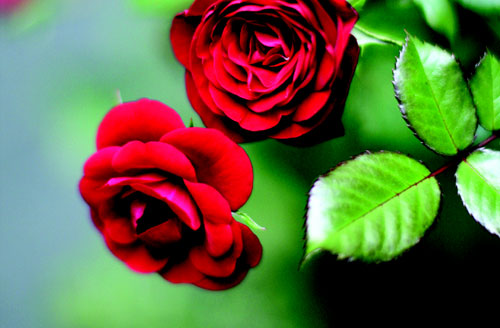
Q. We have had the hill in the backyard weed-whacked and the debris removed. Now the hillside is brown but it still has the roots of the cut weeds. I’d like to place a weed blocking fabric and then plant a ground cover. Do you treat the ground with a weed killer before laying the fabric?
A. The answer is not that simple. I think you’re caught between a rock and a hard spot. The weeds should have been sprayed before you weed whacked them. In addition, it would have been helpful to know if the unwanted vegetation was annual grasses and broadleaf weeds or perennial plants. Here are my concerns. The landscape fabric is a short-term answer and not a long tern solution. Deep-rooted perennial plants would penetrate the fabric in time. The fabric would suffocate the dormant weed seed when covered with a two-inch layer of mulch. As the mulch, decomposes the weeds seeds that have blown in after the installation would germinate with the winter rains or irrigation. Next, a non-selective herbicide, like Round Up sprayed on the bare ground would not kill the remaining plant roots. These products require plants to be leafed out and actively growing. When the area is planted, controlling the unwanted vegetation becomes more challenging with a non-selective herbicide, as the spray will harm the desirable plants. A pre-emergent herbicide kills only the plant seeds and not any plant with an established root system. In addition, they require moisture to establish the chemical barrier that kills the dormant weed seeds. If the hillside isn’t irrigated the herbicide may be marginally effective later on, when the rainy season begins. Here is the sequence of events I would follow to solve the problem. To begin with, I do nothing, water the hillside to encourage the new growth, treat the actively growing vegetation with Round Up, select and plant the ground cover, mulch the area without installing any landscape fabric, and apply a pre-emergent herbicide over the mulch and plants. A reasonable time frame to accomplish this is twelve weeks. You might contact the nursery profession al at your favorite garden center for a second opinion.
Q. My parents have lost the name to a red rose bush they planted back in the eighties or early nineties. How might I find out its name?
A. There has been countless number of red roses introduced over the past twenty-five years. Therefore, you’ll need some photos of the flowers to help with the identification. You could narrow the choices down if they could remember if it were a Jackson and Perkins or Weeks variety. Next, I’d go to the Internet and google “Bay Area Rose Societies” to locate the one nearest to you. I’d then email them several photos of your rose and see if they can ID it. Another option would be a nursery or garden center that specializes in roses. Good luck.
Buzz Bertolero is Executive Vice President of Navlet’s Garden Centers and a California Certified Nursery Professional. His web address is www.dirtgardener.com and you can send questions by email at dirtgarden@aol.com or to 360 Civic Drive Ste. ‘D’, Pleasant Hill, Calif. 94523.
